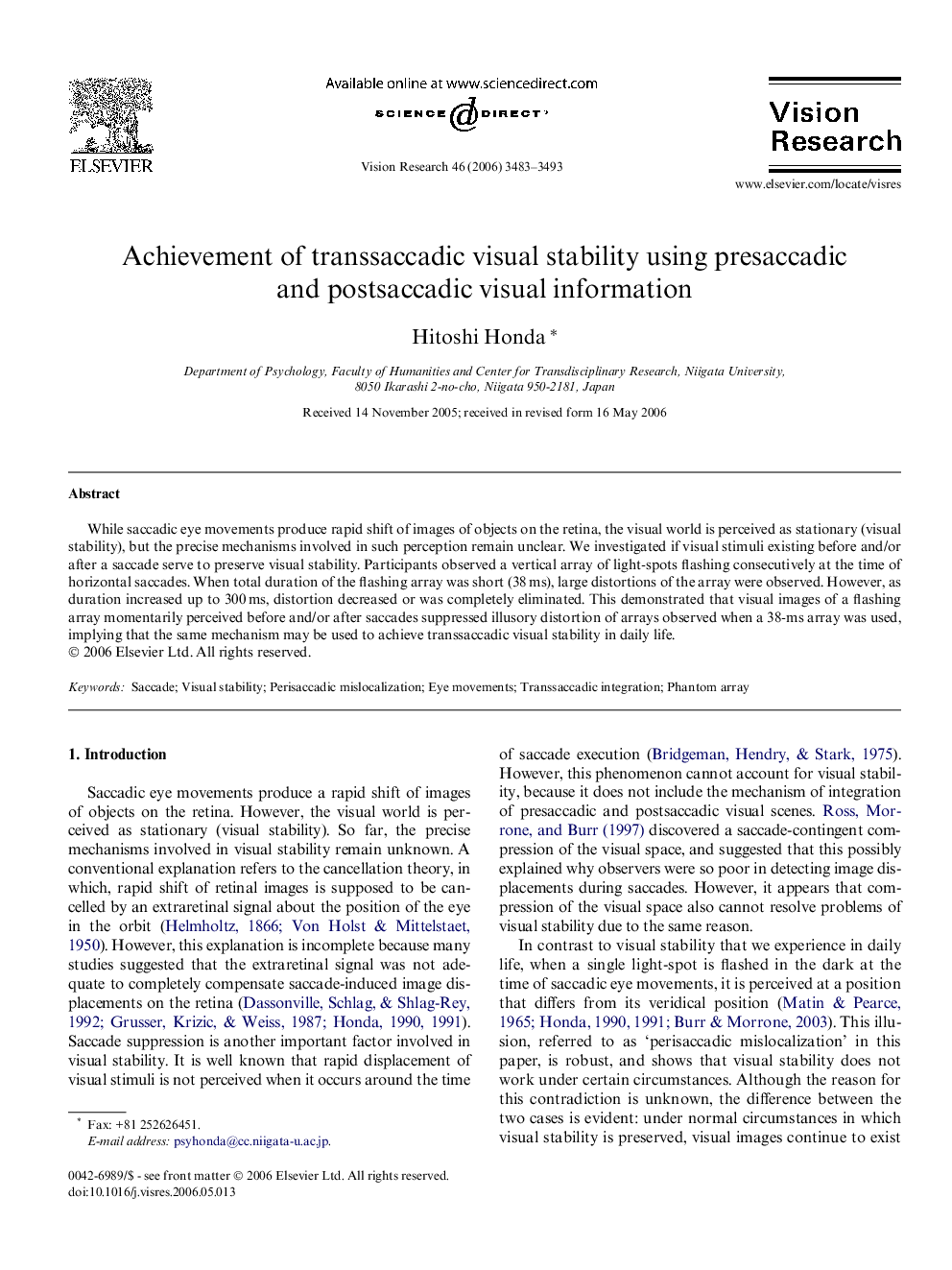| Article ID | Journal | Published Year | Pages | File Type |
|---|---|---|---|---|
| 4035995 | Vision Research | 2006 | 11 Pages |
While saccadic eye movements produce rapid shift of images of objects on the retina, the visual world is perceived as stationary (visual stability), but the precise mechanisms involved in such perception remain unclear. We investigated if visual stimuli existing before and/or after a saccade serve to preserve visual stability. Participants observed a vertical array of light-spots flashing consecutively at the time of horizontal saccades. When total duration of the flashing array was short (38 ms), large distortions of the array were observed. However, as duration increased up to 300 ms, distortion decreased or was completely eliminated. This demonstrated that visual images of a flashing array momentarily perceived before and/or after saccades suppressed illusory distortion of arrays observed when a 38-ms array was used, implying that the same mechanism may be used to achieve transsaccadic visual stability in daily life.
